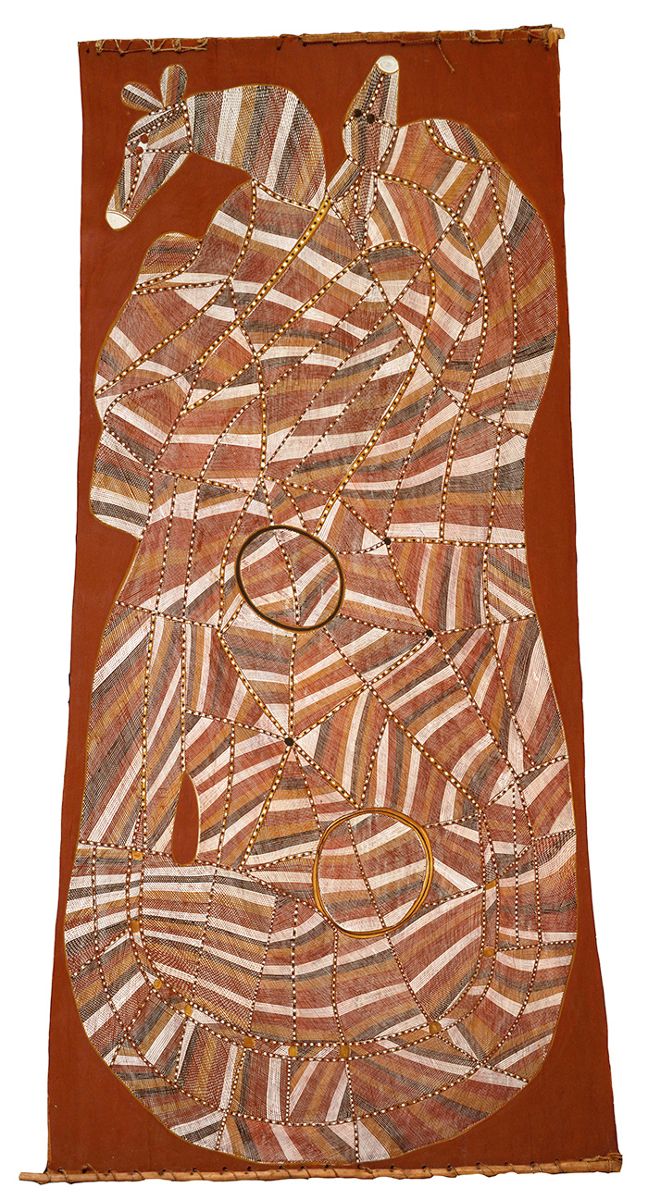
Balang Nakurulk (also known as John Mawurndjul AM),[1] one of Australia’s leading contemporary artists, passed away peacefully on 21 December 2024 while taking an afternoon nap.
Like so many others, his extended family, his community, friends and arts aficionados, I was shocked when informed. I found this news hard to digest. My disbelief was partly because I imagined him to be indestructible, despite the extraordinary quantity of tobacco he had consumed during his lifetime: his energy, dynamism and drive made him seem immortal.
But I was simultaneously and sadly unsurprised. At 72 years of age, I knew he had outlived most of his Kuninjku contemporaries in Western Arnhem Land by a decade or two. When I last spoke to him in November 2024, I could tell that he was frail and exhausted. He seemed unsure if he wanted a future without his partner of 51 years Bulanjdjan Ngalkarbam (Kay Lindjuwanga) who had died in October of kidney failure after a prolonged period on dialysis.
Bulanjdjan was not just Balang’s lifelong partner and mother of their eight children, she was an exceptional artist, tutored by her husband, a leader in the shift of Kuninjku women to bark painting. For a decade in the early 21st century, they were a deadly artistic couple, working together, sometime collaborating, always in a feisty creative and loving relationship.
Balang had expended a lot of energy in recent years tenderly caring for Bulanjdjan hospitalised in Darwin, forgoing his residence on Country and his waning arts practice.
I sense that Balang and Bulanjdjan might be peacefully reunited on their adjacent Kurulk and Kardbam estates.
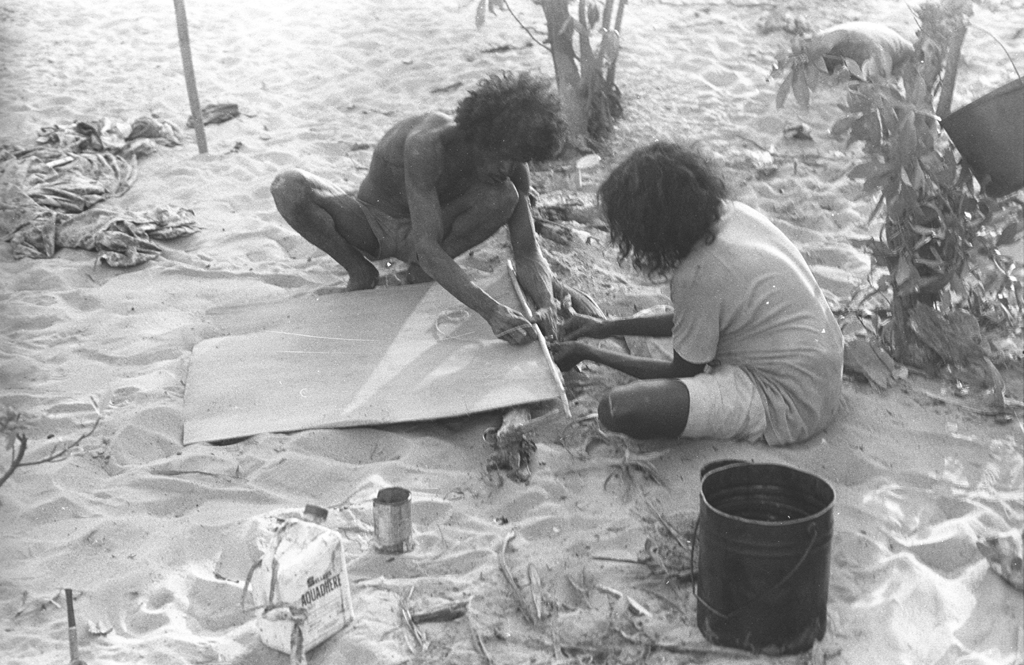
Balang’s journey to international acclaim took decades to achieve. There is a significant art historical literature on his development as an artist, including expert translations by linguist Murray Garde of Balang’s own interpretations of his motivations and aspirations.[2] I will not summarise this literature on his myriad notable achievements except to note some key highlights and then provide some personal observations.
Balang used a palette of naturally occurring ochres and pigments carefully applied with a grass brush to cured sheets of stringybark. He also worked in other media. He began painting in the late 1970s under the tutelage of his older brother Jimmy Njiminjuma and father-in-law Peter Marralwanga. His earliest bark paintings were small in scale yet indicated an exceptional hand in the rarrk or cross-hatching technique; they also showed his amazing draftsmanship in anatomically accurate depictions of animal species.
In the 1980s, Balang enlarged his paintings, sometimes to massive scale, and intensified their composition into increasingly complex arrangements of figures of Ancestral Beings, the Djang or Dreamings at sacred places in the landscape.
In the 1990s, Balang revolutionised the rarrk tradition by reconfiguring his mesmerising crosshatching into geometric formats that bedazzled audiences. This art shone with the spiritual power of sacred places in the landscape that he owned and managed under customary law.
In the 2000s Balang started to garner the stronger recognition that he sought: as the first Aboriginal artist to win the prestigious Clemenger prize; the first Australian artist to have, and attend, a retrospective in their own lifetime at major European art museums; in 2010, he was awarded an Order of Australia. In recognition of his contribution to the Musée du quai Branly commission in Paris, he appeared on the front cover of Time magazine in 2006 and was referred to as 'the Michelangelo of Rarrk'. There are few Australian artists who have received such international accolades.
Balang sought me out and befriended me in mid-1979 when I first arrived as a doctoral student in Maningrida, keen to instruct me in Kuninjku speech and customs. We never discussed his motivations. It may have been my shiny orange FJ 40 Toyota Landcruiser Ute with its Z (Commonwealth) number plate that was the attraction. Maybe he saw in me an open-minded Balanda (white person), a new Australian keen to engage with, learn about and advocate for the marginalised and tradition-bound Kuninjku-speaking community.[3]
Balang back then had sceptical sentiments towards Balanda. He had spent the first decade of his life living in the bush beyond the colonial frontier in the immediate post-war years. His extended family took him to Maningrida in 1963 mainly to access medical assistance as Balang had early onset leprosy in his right hand. Paradoxically, it was this colonial intervention that both cured his leprosy and ensured the later deployment of that right hand in his high art pursuits.
Balang’s formative adolescent years were in the Balanda-dominated and assimilation-focused government settlement of Maningrida where he attended school occasionally and performed badly by imposed Western standards; his English language proficiency was limited. After school he found employment as a member of the Kuninjku rubbish collection crew.
With self-determination and land rights movements emerging in the early 1970s, Balang’s extended family were pioneers of the outstations or homelands movement, firmly rejecting assimilation and returning to live back on their Kurulk clan land at Mumeka south of Maningrida.
Back then Balang was a fine hunter and fisherman, an apprentice artist with obvious talent, diligent in ceremonial participation. He was hard to distinguish from several other Balangs, (his biological brothers, the sons of Anchor Kalumba and Mary Wurdjedje and Mary Marabamba), except in two ways: he was hyper-energetic and surprisingly competitive for someone brought up in a society where egalitarianism was paramount. He also had a short fuse, with a widespread reputation as a 'warrior' and a wicked sense of humour.
Balang was a friend of mine for 45 years, for most of our respective adult years. We were close over those decades, even though I mainly lived in Canberra and he in Arnhem Land: we were 'brothers-in-arms' in several political skirmishes over the years, mainly focused on his right to live on his remote Ancestral lands and on ensuring his art garnered proper recognition and financial remuneration.
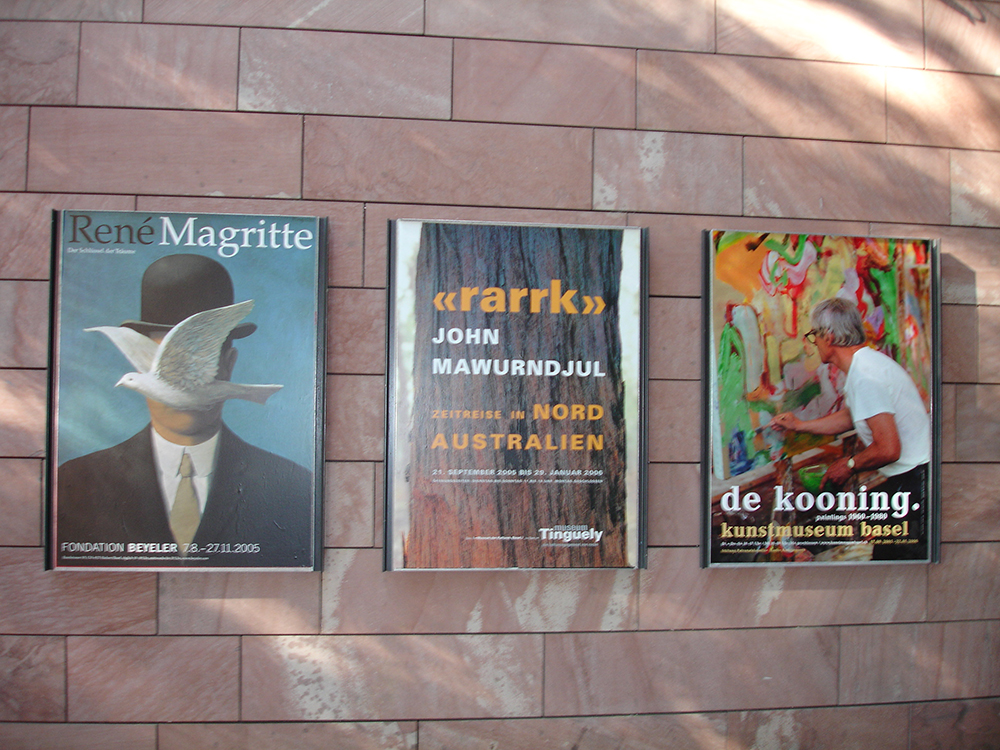
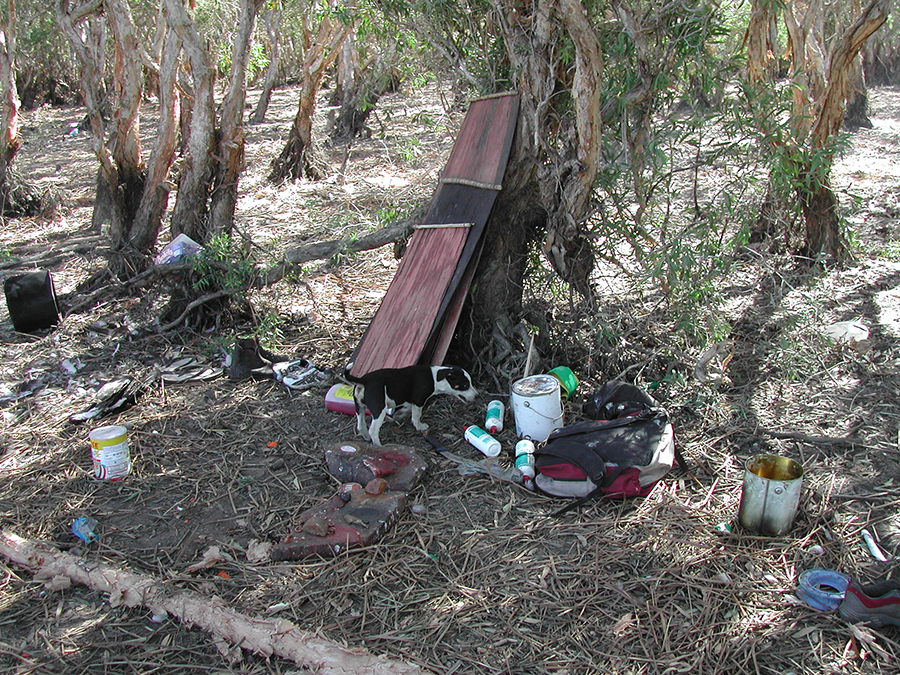
Today, I ponder what made Balang pursue a lifelong commitment to art? Two events, a decade apart, provide some insight.
The first was in 1983 when he made a visit to Canberra, his first adventure down south for a group exhibition at the Australian National University (ANU) School of Art. As a Bininj (black man) from the Northern Territory who had experienced racism, he had a revelation on the high accord afforded to artists irrespective of their colour. He sensed that artistic success might provide economic security and influence; he began to focus on being 'an artist'. His relations with the arts advisers who managed Maningrida Arts and Culture and with commercial gallery directors and private collectors shifted from ambivalence to collaboration.
The second epiphany occurred in 1993 when he travelled with arts adviser Diane Moon to the opening of Aratjara: Art of the First Australians in Dusseldorf, Germany. Here again Balang experienced the high regard accorded to artists internationally. He was afforded an opportunity to see a Picasso retrospective in Cologne that illustrated the career development and artistic diversity of a master. It was here that Moon suggested he too might one day have a retrospective: Balang replied, with prescience, ‘I know’.[4]
Balang’s competitiveness was primarily focused on excelling, wanting to be the very best artist irrespective of ethnicity. I will never forget his sheer exuberance when winning the Clemenger Prize in 2003 because it was not an Indigenous [only] art prize, and he was being recognised as Number One among artist-peers. This was truly a turning point. Nor will I forget his pleasure in Basel, Switzerland, at his retrospective at the Jean Tinguely Museum in 2005, not just because of the celebration of his art, but because he saw retrospectives for late greats René Magritte and Willem de Kooning. We visited the the latter guided by Australian gallerist Bill Gregory, and Balang showed a deep regard for de Kooning’s art, demonstrating a keen appreciation for modernist painting. Similarly, when he was awarded the Melbourne Art Foundation Artist Award in 2009, (the first Aboriginal artist to do so), following James Gleeson (2005) and Peter Booth (2007), he was thrilled to be recognised among the finest Australian artists.
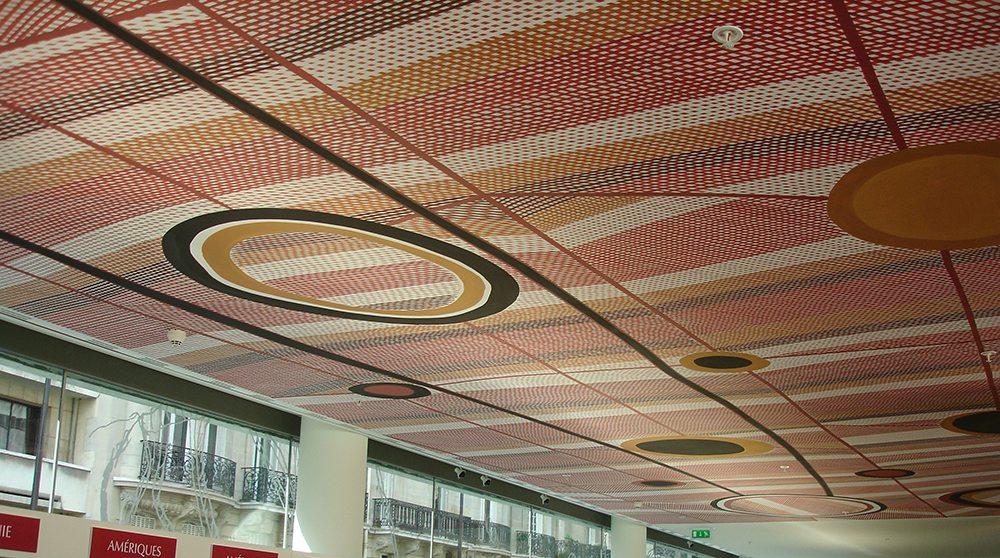
For some reason Balang was not accorded a proper retrospective in Australia during those heady days, beyond a small-scale effort skilfully curated by Apolline Kohen at the Drill Hall Gallery at ANU in 2009. This exhibition, at Balang’s request, celebrated his Canberra connections dating back to 1983. It was a testament to his creative partnership with Kohen, arts manager at Maningrida from 2002–2008.
Despite artistic recognition and high praise, for several years following the Northern Territory National Emergency Response Act (or 'Intervention') of 2007, Balang’s career went into freefall. The state project of recolonisation and neo-assimilation was anathema to Balang’s political views and artistic sensibilities, powered by living on his Country. Federal Government support for outstations waned. Minister Amanda Vanstone tendentiously described outstations as 'cultural museums' — 'artist communities' would have been more accurate. Maningrida Arts and Culture, pivotal to arts brokerage with the market, struggled financially. By 2011 a despondent Balang stopped painting.
His career was revived after 2015 with the belated development of the retrospective John Mawurndjul: I am the Old and the New carefully curated by a team from the Museum of Contemporary Art (MCA) in Sydney and the Art Gallery of South Australia, Adelaide. This massive exhibition of 160 works was launched at the MCA in Sydney in July 2018, accompanied by an encyclopaedic, bilingual 400-page catalogue. Balang was heavily involved in the design of the retrospective. He articulated aspirations for the exhibition to politically and geographically demonstrate connections between his art and Country and Kuninjku values and spirituality, and wanted to reveal the cultural continuum between tradition, the Old, and modernity, the New.[5]
Balang generously mentored and tutored an entire generation of Kuninjku artists: he was inspirational. His legacy includes several thousand works in public and private collections worldwide and an impressive art historical literature that often includes his own voice. In my view, as his spectacular career blossomed Balang had one escalating aspiration: to counter-colonise contemporary high art with Kuninjku high art.
Time will tell if he has been successful.
Balang is dead; long live the rarrk tradition.[6]
Footnotes
- ^ In accord with Kuninjku cultural protocols Balang’s full name should not be spoken but can be written. In his will Balang requested that this prohibition should remain in place until after one wet season following his demise. Balang is his kinship/subsection term of address, Kurulk is his patri-clan.
- ^ Key texts include Christian Kaufmann, (ed.) rarrk: John Mawurndjul—Journey through Time in North Australia, Crawford House Publishing, (Adelaide: 2005); Claus Volkenandt and Christian Kaufmann, (eds) Between Indigenous Australia and Europe: John Mawurndjul, Aboriginal Studies Press, (Canberra: 2009); John Mawurndjul: I am the old and the new / John Mawurndjul: ngayi ngakarrme bokenh-mankerrnge la mankare, Museum of Contemporary Art Australia and Art Gallery of South Australia (Sydney and Adelaide: 2018).
- ^ Another Balanda agitator on their behalf was Peter Cooke, then the arts advisor with Maningrida Arts and Crafts (now Arts and Culture).
- ^ See Diane Moon, “Powerlines” in John Mawurndjul: I am the old and the new, (2018) p. 330
- ^ The exhibition toured nationally between 2018-2021 to ten venues but unfortunately coincided with Covid-19 enforced lockdowns.
- ^ While my tribute is very personal, it has benefited from input from Apolline Kohen, Luke Taylor, Michael Dillon and Fiona Salmon.
